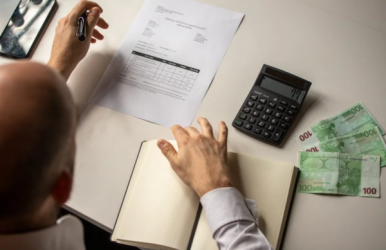Top 10 Most Popular Paraguay Food That You Must Try
BY Abdul Aziz May 1, 2024
Many of the countries in South America are popular for their exquisite and varied cuisine. However, the practices of Paraguay food are not known to many. The Paraguayan Cuisine has been influenced by the local indigenous tribe’s culinary traditions and practices brought by immigrants from Spain, Italy, and Portugal. Being a foodie myself, I love traveling around the world to have a taste of every new variety of food that the world has to offer. Visiting remote areas, meeting with new people, and trying out their traditional dishes is what I have always loved! I was also in your shoes when I first landed in Paraguay, a bit startled and confused. Although, as I began to explore, my first meal at a fancy restaurant in Asuncion changed my entire perception of the state. Tid-Bits About Paraguay Food Classic Paraguay food includes some of the most exclusive dishes that are bound to beat any of the Peruvian or Argentine preparations. Traditional culinary elements in Paraguay food recipes consist of meat, maize, vegetables, manioc, cheese, fish, milk, and even fruits. ‘Asado’ is a local term used for barbecue, which is referred to as both a cooking practice and a social event. In Paraguay, barbecuing is the most important mode of cooking their traditional Paraguayan food dishes. Here in this article, I will elucidate the best dishes and popular foods in Paraguay that you must try in Paraguay this year. The Paraguay famous foods excite your taste buds and have an experience like never before. 1. Kivevé You will be stuck in a dilemma whether to count this as a main course or a dessert. Kieve is the most popular and loved Paraguay food. It is a vegetarian dish that is cooked out of andai (a type of juicy pumpkin), cornmeal, Paraguayan cheese, milk, and sugar. Kieve is a typical food in Paraguay. It has a very creamy and light texture and is orangish in color. This rich-flavored delicacy is served lukewarm and is often consumed as a side dish or even main meal, at breakfasts, and as an evening snack. 2. Chipa Considered a staple Paraguay food, Chipa is a simple bread roll that was invented by the local indigenous people in the 18th century. It is a bun that is made out of manioc or cassava flour, lard, and anise, and beaten eggs and cheese. There are different versions of Chipa available, varying over the regional influences. The bread has a very crunchy crust due to the addition of lard. The crumb is soft and has a unique flavor. It is prepared and consumed by every household in the state. 3. Bori Bori Bori-Bori (Vori-Vori) is a nutritious and flavorful thick soup that is prepared out of vegetables such as carrots, celery, onions. It is filled with meat (chicken or beef) and dumplings of cornmeal plus cheese. The prime flavoring ingredients in this soup are bay leaves, cloves, and parsley. The addition of saffron to this hearty broth makes it even more flavorful and rich golden in color. It must be served piping hot, garnished with some parsley and Paraguayan cheese on the side. It is especially popular during the winters. 4. Sopa Paraguaya This specialty is not what it sounds like. Even though SOPA translates to soup in the local language, it is not at all in the vicinity of any soupy preparations. It is the national dish of Paraguay, which resembles a cakey thick bread. It is crafted out of cornflour, cheese, milk, and eggs. The flavor is inculcated through the use of onions and pork fat. It is usually baked and is often termed solid soup. It has a soft and crumbly texture and is served on special occasions as a side dish. 5. Mbeju Mbeju, when translated to the local Guarani language, means cake. It is a very simple and staple Paraguay food. It is a kind of starchy pancake that is prepared with cassava flour, salt, oil, milk, eggs, crumbled cheese, and even pork fat. The dough is kneaded well and rolled out thickly like a pancake. It is then fried in hot oil. It is usually consumed during breakfast, sometimes dinner, alongside a bitter herbal tea or coffee. 6. Soyo This is another popular Paraguay food, which is a thick unpassed soup. It is made with beef grounded in a mortar, rice, and vegetables, including green peppers, onions, and tomatoes. Soyo is another good example of Paraguay’s famous food. The dish is flavored with garlic, parsley, oregano, salt, and pepper. The name is derived from the native Guarani phrase so’o josopy, meaning crushed meat. A whole bowl of soyo can be considered as a complete meal and has a high calorific value. Also Read: Unmissable Attractions In Surabaya 7. Tereré Since the climate in Paraguay tends to grow hotter every summer, Terere acts as a relief to many. It is a cold-brewed herbal tea that is bitter in taste and is commonly known as yerba mate. Terere is one of the essential elements of export, and the natives can be seen carrying around a thermos flask, guampa (a spherical mug), and bombilla (a silver straw) everywhere they go. It is a very healthy and refreshing drink and has high caffeine content. 8. Dulce de Mamon Here comes our most awaited syrupy sweet dessert in the list of top Paraguay food you must try! Dulce de Mamon is one of the oldest and most traditional preparations of Paraguay, which has only two major ingredients. It is cooked by boiling small cut wedges of papaya in sugar syrup. The mixture is simmered for almost 2 hours in order for the papaya to achieve a soft texture. You can even add some cloves, lemon zest, and a little orange juice to enhance the flavors. Also Read: 3 Intriguing Reasons To Cruise In Alaska 9. Pira Caldo Another most favored Paraguay food includes Pira Caldo. It is basically a light fish stew made with freshwater catches such as surubi, mandi’y, and tare’y. I have never in my life tasted such meaty textured fishes with a tinge of saltiness in them. Initially, vegetables such as onions, tomatoes, leeks, celery, bell peppers, and carrots are fried in pork or beef fat and are cooked with other spices. It is then combined with milk and soft white cheese to improve the thickness and flavor. 10. Bife Koygua Bife Koygua, or hidden steak as it is known, is another popular Paraguay food that is a must-try. It is a heavy preparation in which the beef steaks are covered with onions and tomatoes. Hence the name. According to the local language, bife means beef, and koygua means shy or hidden. The recipe calls for the steak to be pounded first with spices, then fried with onions and topped with tomatoes. Towards the end, an egg or two is added at the top, and the dish is garnished with parsley. Puchero Paraguayo Recipe The Paraguayan version of a traditional meat stew is called Puchero paraguayo. This stew has its origins in Spain and is now prepared in several countries throughout South America and the Philippines. The name of the stew, Puchero, comes from the Spanish word meaning "stewpot". Course: Main Course Cuisine: Latin American, Paraguayan Servings: 4 people Author: Nita Ragoonanan Ingredients 1½ lb beef (skirt or flank steak, cut into pieces) 3 cloves garlic, cut in half 1 onion, chopped 1 green bell pepper, diced 2 carrots 10 oz. pumpkin, cubed 2 potatoes, cubed ½ cup rice 6 tablespoons olive oil Salt Pepper Equipment Pressure cooker Instructions To start, get a large pot and fill it with 10 cups (2.5L) of water. Add in some onions, carrots, and bell peppers, and bring it to a boil. Let it simmer for 15 minutes and season it with salt and pepper to your liking. Set it aside. Next, heat some olive oil in a pressure cooker and add in some garlic and meat. Saute over high heat while stirring constantly until the meat is browned. Pour in the reserved broth and vegetables and close the pressure cooker. Cook for 45 minutes on medium-low heat. While waiting, rinse the rice. After 45 minutes, open the pressure cooker and add in the rice, potatoes, and pumpkin. Close the pressure cooker again and continue cooking for 15 minutes. Frequently Asked Questions!!! (FAQs): Q1. What Is The Traditional Dessert In Paraguay? Ans: Mazamorra also known as Kaguyjy is one of the most popular traditional deserts in Paraguay. it is made of corn and sugar, mixed with honey or milk. Ka'i Ladrillo is a candy made of peanuts and molasses. Q2. What Is Paraguay's National Dish? Ans: Sopa Paraguaya is the national dish of Paraguay. it is similar to cornbread and made up of corn flour, pig fat, or butter, with cheese and milk. it is very spongy and is rich in calories and protein. Q3. What Is The National Drink Of Paraguay? Ans: Yerba mate tea is prepared with cold water. different variations of terre can be found in Brazil and Argentina. Its birthplace is Paraguay. Final Thoughts These are some of the most exotic preparations from Paraguay that made their way into my Top 10 list. Thanks to those Guarani friends that I had over there who guided me through to the best of their culinary traditions. And if you are hesitating about visiting this place, trust me, the experience is worthwhile. It is not only about their food but also their culture, traditions, and heritage. This beautiful country deserves all the appreciation in the world. You May Also Like: Top 7 Places To Visit For An Asian Solo Traveler Top 7 Nantucket Beaches For Tourists In Massachusetts 10 Things To Do In Bogota – You Must Know Before Going











